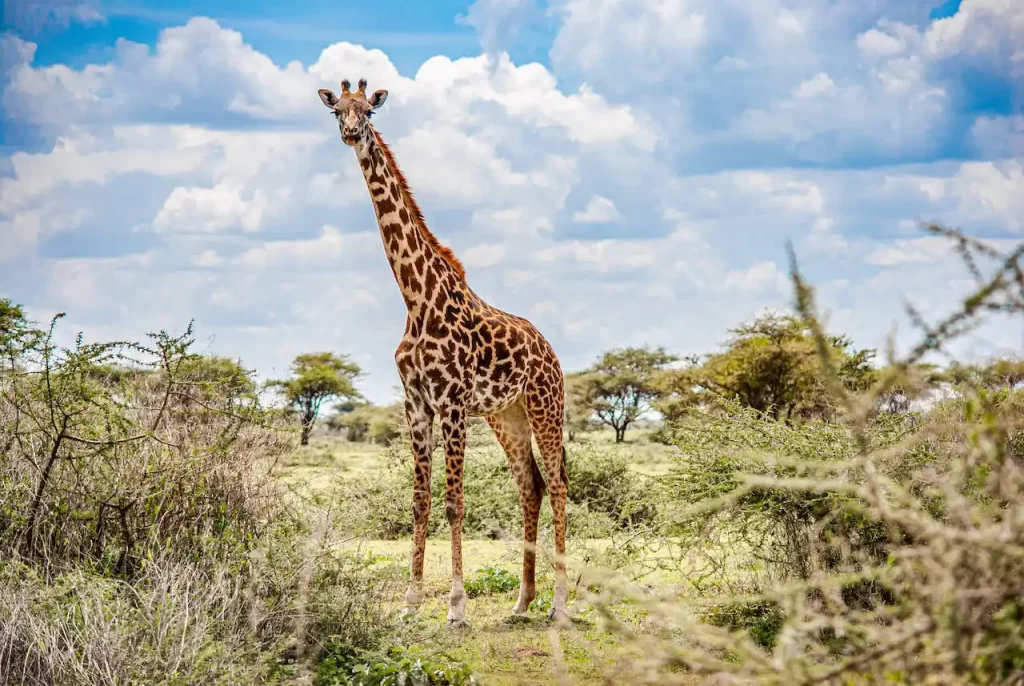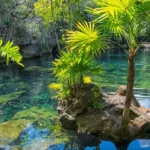Serengeti National Park in Tanzania is a world-renowned wildlife sanctuary, known for its breathtaking landscapes and rich biodiversity. This comprehensive guide provides an in-depth look at what makes the Serengeti an unforgettable destination for tourists and nature enthusiasts.
Wildlife Viewing in Serengeti National Park

The Serengeti is a haven for wildlife enthusiasts. The park is home to the Big Five: lions, leopards, elephants, buffaloes, and rhinoceros. This makes it a prime spot for safari-goers aiming to see these majestic animals in their natural habitat. Additionally, the park boasts a large population of cheetahs, giraffes, hippos, and over 500 bird species, making it a birdwatcher’s paradise.
One of the most phenomenal events in the Serengeti is the Great Migration. This annual migration sees over two million wildebeest, zebras, and gazelles traverse the plains in search of fresh grazing grounds and water. This spectacle is not only a display of natural wonder but also a critical part of the ecosystem, influencing the patterns of predators and other species in the park.
Visitors can view wildlife in various ways, including game drives at different times of the day. Dawn and dusk drives offer opportunities to see nocturnal and crepuscular species. Night safaris, although less common, provide a unique perspective on the park’s nightlife.
Guided Safaris and Tours

Exploring the Serengeti typically involves guided safari tours. These tours are essential for a safe and informative journey through the park. Safari guides are knowledgeable about wildlife, geography, and local customs, enhancing the overall experience.
Tour options vary from day trips in 4×4 vehicles to multi-day excursions staying at campsites or lodges within the park. Luxury safaris offer high-end accommodations and amenities, while budget safaris cater to those seeking a more rustic experience.
For a truly unique perspective, hot air balloon safaris are available. These provide an aerial view of the Serengeti, offering a breathtaking panorama of the migrating herds and the diverse landscapes of the park.
Walking safaris are another option, offering a more intimate connection with the African bush. These guided walks allow visitors to experience the wildlife and environment up close, under the safe supervision of experienced rangers.
Cultural Experiences in the Serengeti
The Serengeti is not only about wildlife; it’s also a place of rich cultural heritage. Many safari tours include visits to local Maasai villages, offering a glimpse into the lives of one of Africa’s most iconic tribes.
The Maasai people have lived in harmony with nature for centuries. Visiting their villages provides insight into their traditional customs, dances, music, and way of life. Tourists can participate in cultural activities, learn about Maasai folklore, and even purchase handmade crafts.
These cultural visits also highlight the symbiotic relationship between the Maasai community and the Serengeti ecosystem. They demonstrate how indigenous knowledge and practices play a vital role in conservation efforts.
Accommodations in Serengeti National Park
The Serengeti offers a range of accommodations, from luxury lodges to basic campsites. Luxury lodges provide amenities such as swimming pools, fine dining, and spa services, often with stunning views of the surrounding landscape. These lodges are designed to offer comfort while blending into the natural environment.
For those seeking a more adventurous experience, tented camps offer a closer connection to nature. These range from basic facilities to deluxe tents with en-suite bathrooms and private verandas.
Budget accommodations are also available outside the park boundaries. These options are more economical but may require longer travel times to reach the park’s main attractions.
Regardless of the choice, staying within or near the Serengeti provides unparalleled access to the park’s wildlife and landscapes.
Best Time to Visit Serengeti National Park
The Serengeti is a year-round destination, but certain times are ideal for specific experiences. The dry season, from late June to October, is the best time for wildlife viewing as animals congregate around water sources.
The Great Migration usually occurs between December and July. The most dramatic spectacle – the river crossings – typically happen between July and August. However, the exact timing can vary depending on rainfall patterns.
The wet season, from November to May, brings lush landscapes and an abundance of newborn animals. This period is also excellent for bird watching, as migratory birds arrive.
Photography Opportunities in the Serengeti
The Serengeti is a photographer’s dream. The park’s vast landscapes, dramatic skies, and diverse wildlife provide endless opportunities for both amateur and professional photographers.
Sunrise and sunset offer magical lighting conditions, perfect for landscape and wildlife photography. The Great Migration, with its dramatic river crossings and interactions between predators and prey, presents unique action shots.
Photographers should be prepared with appropriate equipment, including telephoto lenses for wildlife and wide-angle lenses for landscapes. It’s also important to respect wildlife and not disturb animals for the sake of a photo.
Conservation Efforts in the Serengeti
The Serengeti is not only a tourist destination but also a significant center for conservation and research. Efforts are ongoing to protect the diverse species and ecosystems within the park.
Visitors can learn about these conservation initiatives, including anti-poaching operations, habitat restoration, and community outreach programs. Supporting local conservation efforts, either through donations or by choosing eco-friendly tours, contributes to the sustainability of the park.
Frequently Asked Questions (FAQs)
Q: Do I need a visa to visit Tanzania and the Serengeti? A: Most visitors require a visa to enter Tanzania. Check with the nearest Tanzanian embassy or consulate for specific requirements.
Q: What vaccinations are needed for Tanzania? A: Vaccinations for yellow fever, typhoid, and hepatitis A are recommended. Malaria prophylaxis is also advised. Consult a healthcare professional before traveling.
Q: Can I visit the Serengeti independently, without a tour? A: While it’s possible to visit the Serengeti independently, guided tours are highly recommended for safety, navigation, and a more enriching experience.
Q: What is the currency in Tanzania, and can I use credit cards in the Serengeti? A: The Tanzanian Shilling is the local currency. Major lodges and campsites in the Serengeti usually accept credit cards, but it’s advisable to carry some cash.
Q: What clothing should I pack for a safari in the Serengeti? A: Pack light, comfortable clothing in neutral colors. Include a hat, sunglasses, sunscreen, and sturdy shoes. Mornings and evenings can be cool, so bring a jacket or sweater.












beautiful blog post with great narrative informations plus photos. Thank you for sharing such a helpful insights